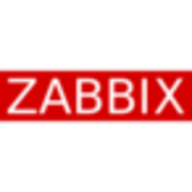

SCOM and Zabbix are both contenders in the IT monitoring arena. SCOM has an upper hand with Microsoft environments due to its deep integration capabilities, while Zabbix stands out for its open-source flexibility and cost-efficiency.
Features: SCOM offers extensive monitoring for Microsoft environments with comprehensive management packs and a high degree of customization, allowing tailored monitoring setups. However, it can be less effective for non-Microsoft systems. Zabbix provides flexibility and adaptability, supporting diverse systems with community-driven templates and an impressive alerting system.
Room for Improvement: SCOM struggles with high licensing costs and performance issues in large environments. Its dashboards and reports need refinement for better user experience, and it requires improved integration with non-Microsoft and cloud systems. Zabbix could enhance its interface and reporting for non-technical users, and simplify initial setup and cloud integration.
Ease of Deployment and Customer Service: SCOM requires substantial infrastructure investment for deployment, fitting well within Microsoft's ecosystem, and benefits from Microsoft’s strong customer service. Zabbix offers flexible deployment in hybrid environments with easy setup, though its primary support is community-based, with additional official support available for a fee.
Pricing and ROI: SCOM comes as part of the System Center suite, with significant upfront costs, complex licensing, but adds value in environments heavily using Microsoft products. Zabbix, as an open-source solution, incurs no licensing fees, offering a cost-effective implementation suitable across various environments.
They often treat issues in isolation, not considering how one problem might relate to another.
When I was working directly with Microsoft at TCS, my first company, the support experience was quite smooth, and we received solutions promptly.
It is so straightforward that I have never had to use the support.
The scalability of SCOM, meaning its ability to adapt to our needs, is excellent because we are working with SQL systems and multiple servers.
Zabbix has high scalability.
Zabbix is very scalable and lightweight.
I would rate its scalability ten out of ten.
I have not seen many errors or frequent data loss because once we have installed the agent on the system and have the details, not much manual intervention is required.
SCOM is a bit unstable lately, primarily due to a lack of resources.
Zabbix is very scalable and lightweight.
Zabbix is quite stable, and we haven't had any problems with Zabbix itself.
I would like to see a software-as-a-service version in Azure to eliminate the need for on-premise infrastructure.
SCOM is likely to be phased out in favor of more compatible tools like Icinga for application monitoring or when moving to cloud solutions like CloudWatch and Azure.
It would be beneficial to have a summary on one single dashboard, as there are many more possibilities available.
The only issue I can note is that it's Linux-based, and Linux documentation is not the best.
It is literally free.
It assists me in detecting server downtime and delivers basic performance monitoring right out of the box.
The most valuable feature of SCOM is its monitoring capability, and we have integrated SCOM with Grafana, which is a dashboarding tool.
SCOM integrates several systems and offers correlation features, like setting up everything around Active Directory or DNS.
If disk usage surpasses a threshold, say 70%, I receive alerts and can take proactive action.
Zabbix has a lot of features, including monitoring, status updates, and collecting information telemetry from storages and servers as well.
Zabbix is Linux-based open-source software, and the main use case is to reduce costs.
| Product | Market Share (%) |
|---|---|
| Zabbix | 11.4% |
| SCOM | 1.7% |
| Other | 86.9% |


| Company Size | Count |
|---|---|
| Small Business | 16 |
| Midsize Enterprise | 22 |
| Large Enterprise | 54 |
| Company Size | Count |
|---|---|
| Small Business | 53 |
| Midsize Enterprise | 23 |
| Large Enterprise | 34 |
SCOM (System Center Operations Manager) is a cross-platform data center monitoring and reporting tool that checks the status of various objects defined within the environment, such as server hardware, system services, etc. The solution allows data center administrators to deploy, configure, manage, and monitor the operations, services, devices and applications of multiple enterprise IT systems via a single pane of glass. It is suitable for businesses of all sizes.
SCOM Features
SCOM has many valuable key features. Some of the most useful ones include:
SCOM Benefits
There are several benefits to implementing SCOM. Some of the biggest advantages the solution offers include:
Reviews from Real Users
Below are some reviews and helpful feedback written by PeerSpot users currently using the SCOM solution.
A Manager at a financial services firm says, “The feature I like most about SCOM is that it is easy-to-use. I find it very user-friendly. I also like the knowledge base which it has. You can find the resolution to questions or issues directly within the SCOM itself. It will alert you with a recommendation of what you need to do at the same time. This sort of self-diagnosis or prompting is one of the great values you get from SCOM compared to other solutions.”
PeerSpot user Zahari Z., Information Technology Auditor at a financial services firm, mentions, “Availability monitoring is the feature I have found most valuable, as well as the capacity and ability to send notifications. There is a mechanism to set up a notification from the SCOM and whenever there is a drop in the availability the notification alerts not only for availability but for other issues as well. You can align thresholds according to the speed of your environment and you can have a threshold related notification, which is one of the useful features.”
Bill W., Sr. Systems Engineer at Arapahoe County Government, comments, “ I like some of their newer features, such as maintenance schedules, because SCOM records SLA and SLO time. When we patch, things are automatically put into maintenance mode so that the numbers for our systems being down, do not count against us.”
A Project Manager at a tech services company explains, “The feature I have found most valuable is the book feature. While we run the Sprint one we can add some setups for multiple sprints.”
A Systems Engineer at an educational organization states, “Because it's Windows-based, it actually reports quite well. It reports everything you can think of on the Windows server and allows you to monitor anything. It's excellent for those in the Windows world as it's very good at it.”
Zabbix is an open-source monitoring software that provides real-time monitoring and alerting for servers, networks, applications, and services.
It offers a wide range of features including data collection, visualization, and reporting.
With its user-friendly interface and customizable dashboards, Zabbix helps organizations ensure the availability and performance of their IT infrastructure.
We monitor all Network Monitoring Software reviews to prevent fraudulent reviews and keep review quality high. We do not post reviews by company employees or direct competitors. We validate each review for authenticity via cross-reference with LinkedIn, and personal follow-up with the reviewer when necessary.